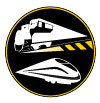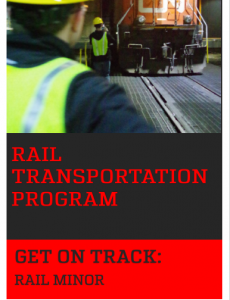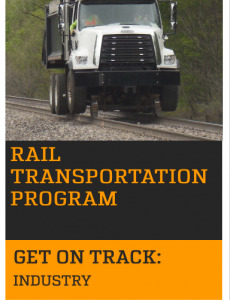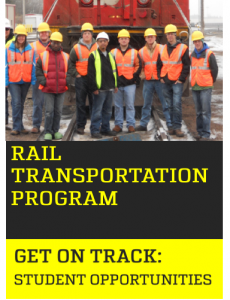The Rail Transportation Program is participating in a multidisciplinary and multinational research project funded by the National Science Foundation (NSF). The project concentrates on the sustainability challenges of one form of bioenergy--liquid transportation fuels or “biofuels”.
RTP has received over $1 million through externally funded research projects to date. We partner with other university programs and departments, with outside agencies and sources like MDOT and USDOT, other universities, and with industry partnerships like CN and Union Pacific.
Projects
Principal Investigator: Dr. Kathleen Halvorsen
Co-PI(s): Dr. Pasi Lautala
Sponsored by: National Science Foundation
Amount Awarded:
$4 981 749.00
Project Schedule:
Sep, 2012 to Sep, 2017
Principal Investigator: Dr. Pasi Lautala
Co-PI(s): Thomas Oommen, Paul G. Sanders, Tim Havens, Hamed Pouryousef
Dr. Paul Sanders and PhD Student Karl Warsinski are working on the development of Austempered Ductile Iron as a potential railroad wheel material. As part of the project, Warsinski has been collaborating with a local railroad to collected data on wheel temperatures during the braking application.
Sponsored by: NURail Center
The objective of this research project is to understand how drivers respond to rail crossings on rural, low-traffic roads. In this study we presented a variety of rail crossings with different markings and safety features using a NADS Minsim driving simulator with a recently developed set of train crossing scenarios and train cars and engines.
Sponsored by: NURail Center
Hudson Bay Railway (HBR) is a key trade link that connects domestic origins and destinations in Canada and United States with the export origins and destinations in Europe through the Port of Churchill.
Sponsored by: NURail Center
This project builds on current work to apply European and U.S. simulations software on shared use corridors.
Sponsored by: NURail Center
Dr Timothy Havens The main objective of this research project is to develop computer vision and machine learning methods for automatically detecting the defects of rail car wheels using thermal and visible spectrum (color) camera sensors.
Sponsored by: NURail Center
Dr. Paul Sanders and PhD Student Karl Warsinski are working on the development of Austempered Ductile Iron as a potential railroad wheel material. As part of the project, Warsinski has been collaborating with a local railroad to collected data on wheel temperatures during the braking application.
Sponsored by: NURail Center
Continues the Ongoing efforts will include evaluation of gate timing and a variety of safety devices. Myounghoon “Philart” Jeon and Alex Hardy, a graduate student in Mechanical Engineering – Engineering Mechanics are continuing the work started by Hardy and Dr. John Hill.
Sponsored by: NURail Center
Dr. Stan Vitton is leading a project that analyzes acceptable aggregates available in Michigan for railroad ballast on high speed rail lines. The current work on the railroad ballast project involves identification and testing of a select number of aggregates to evaluate whether their characteristics meet ballast specifications.
Sponsored by: MDOT
The RTP Team and graduate students. This project concentrates on identifying challenges faced by rural rail service providers and shippers along light-density lines and on developing tools and methods that facilitate the use of rail and multimodal transportation alternatives in the Upper Peninsula of Michigan.
Sponsored by: MDOT






